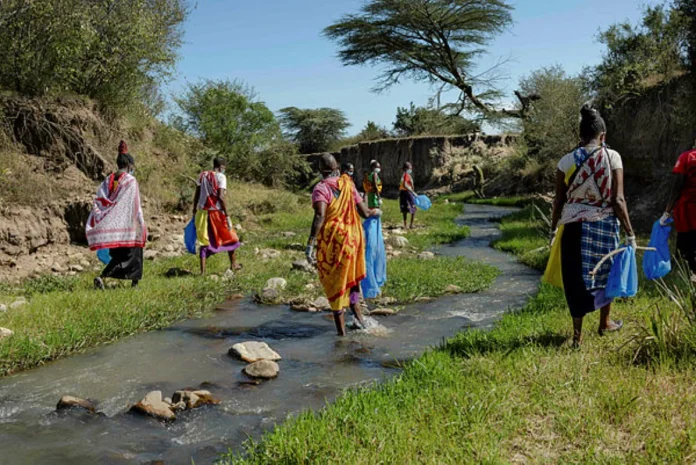MASAI MARA: At dawn in a village within Kenya’s Maasai Mara wilderness, zebras rouse themselves and move away from the huts where they sleep for protection from lions.
Bernard Kirokor, aged 21, recounts watching an elephant give birth opposite his village just days ago, sharing a video of the mother protecting her newborn.
“The wildlife are our neighbours and we love them,” he said, as villagers milked the herd of cattle gathered around their huts.
The village is situated in the Nashulai conservancy, which prides itself on the local Maasai community and their cattle continuing to live alongside the region’s world-famous lions, elephants, and giraffes.
Community conservancies emerged in the 2000s to protect wildlife corridors, with locals pooling individual plots and removing fences to allow animals to roam freely.
To make this financially viable, locals often leased their land to tourist companies and moved away.
Nashulai, meaning “co-existence” in the local Maa language, was founded in 2016 with a determination to keep its 6,000 residents within the conservancy.
It prides itself on being the first conservancy formed, owned, and managed by local Maasai without assistance from an outside tourism company.
“We don’t want to create conservation refugees,” Evelyn Aiko, Nashulai’s conservation manager, told AFP.
Nashulai earns money through a college within the conservancy that trains locals to become rangers and tour guides, alongside study programmes with universities.
Its model has earned international recognition, including the United Nations Development Programme’s Equator Prize in 2020.
The system of conservancies has changed radically over the past decade, with almost all now embracing the idea that people should continue living in them.
“A lot has changed in how they are governed,” said Eric Ole Reson, chief programmes officer at the Maasai Mara Wildlife Conservancies Association.
Nashulai’s founder, Nelson Ole Reiyia, highlighted the importance of maintaining cultural connectedness to the land from the start.
Nashulai is run by a council of elders who decide on grazing and conservation areas.
Lacking commercial tourism investors, Nashulai relies on donors for over half its funding and faces significant pressures.
One pressure is climate change, as unpredictable rains make it hard to plan cattle-grazing and maintain the area for wildlife.
Another threat comes from wealthy tourism operators nearby, who last year enticed a fifth of Nashulai’s landowners to lease their plots and move away.
Maasai landowners across the region now play a very active role in managing conservancies, sitting on joint boards with tourism companies.
“It’s not a one-way system where someone dictates the payments,” said an expert who helped negotiate the deals.
Many Maasai landowners have signed new leases in recent years as original deals expired, indicating that many feel they have benefited. – AFP








